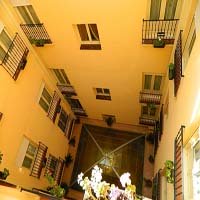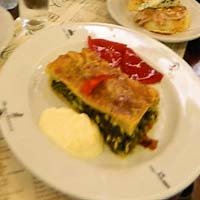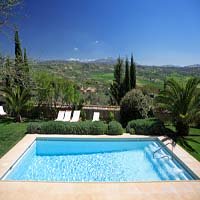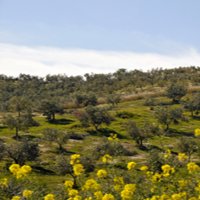Huelva Spain
Huelva, Spain – Rich in History and Andalusian Culture
Located not far from Spain’s southernmost border with Portugal, Huelva is the capital of Andalusia’s Huelva Province. Blessed with a favorable location on the Gulf of Cádiz at the spot where the mouths of the Tinto and Odiel Rivers come together, Huelva has a long and fascinating history – especially for maritime history buffs. Much of its history relates to the town’s status as an important Spanish port.
Climate
Meteorologists refer to the climate as Subtropical-Mediterranean. Because of its location in extreme southern Spain, Huelva’s summers are extremely hot. Winters, though, are very mild. Although you should expect some rain during winter, the temperatures are ideal for sightseeing and Huelva averages about 300 sunny days per year. That’s good, because there are plenty of things for travelers to see and do.
History
Huelva has been continuously inhabited for at least 5,000 years, being founded by the Phoenicians sometime around 3,000 B.C. A little later, it was taken over by the Carthaginians and then the Tartessians, prosperous ancient metal traders who were based in southwestern Andalusia. Iberian tribes next occupied the area, followed not too long afterward by the conquering ancient Romans. They remained the governing power in Huelva until the 5th century A.D., capitalizing on the region’s importance to shipping and its rich copper deposits. The region still features a few Roman ruins.
Eventually the Moors came to Huelva as well as the rest of Andalusia. Moorish mosques and forts, together with Mudéjar churches (built by Moors who remained in Spain after the Christian Reconquista), still remain in Huelva and the surrounding area even today. Following the Reconquista, Christianity held sway in the area, which came under the rule of Spain’s succession of Catholic monarchs. It was at this time (the late 15th century) that Huelva came to be known to the entire Western World. Why so, you might ask? Well, Huelva’s port (Palos de la Frontera, about eight miles away) was the place from which Christopher Columbus set sail on his groundbreaking voyage to the New World.
Huelva suffered substantial damage in the catastrophic 1755 Lisbon earthquake, requiring much of the city to be rebuilt. After that, it entered a less colorful period, focusing on the fishing, mining and shipping industries. The Brits got involved in copper, silver and gold mining in the area during the 19th century. Among other things, they created Huelva’s Barrio Reina Victoria, a typically British neighborhood with old Victorian homes and small residential gardens. The area looks a bit out of place because of its English architecture, but it was built that way on purpose, as homes for British miners. Things stayed pretty quiet until the outbreak of World War II.
That’s when Huelva quietly became a hub of espionage activities for the Axis and the Allies. German spies who lived in the area reported on British shipping entering and leaving the Atlantic, while people living in the city’s large British community reciprocated by reporting on German shipping.
Today
After the war, Huelva’s economy started changing. Tourism and services are now the big focus, although fishing and farming (strawberries, primarily, but other fruits too) are still important. Preserving the regional environment has become a top priority, which explains why a third of the province is now devoted to nature preserves. Doñana National Park, for example, is one of the country’s largest and most famous wildlife preserves. It’s also a UNESCO World Heritage Site, but the rules to see it are quite restrictive. Entry is limited to those who book one of the guided minibus tours that are offered by the park. Only seven tours are held each day and each one is limited to a dozen people. That being said, these guided tours are a fascinating 3-hour experience.
This strong focus on environmentalism also explains why the province has no airports – Huelvans believe jet traffic would disrupt the delicate balance of their nature preserves. So, if you want to fly into the area, you’ll need to take a plane to Seville instead. Fortunately, Seville isn’t that far away and it’s a city you’d probably want to see anyway.
Popular Sights
Huelva (both the city and the province) has many attractions, but the sites relating to Christopher Columbus are among the most popular. In addition to Huelva city itself, they include:
- · Palos de la Frontera (about eight miles away) – the port from which the Niña, Pinta and Santa Maria sailed.
- · La Rábida, the Franciscan monastery in Palos de la Frontera where Columbus enlisted the help of the monks to arrange his meeting in Seville with King Ferdinand and Queen Isabella. During this meeting he obtained the royal approval and financing he needed for his voyage of discovery. Other than its extensive gardens and a monument to Columbus, the monastery doesn’t look like much from the outside. Inside, though, its artwork depicting Columbus and his sailors is quite dazzling. A beautiful chapel features an impressive Mudéjar ceiling with painted panels, and a large, museum-like room tells the tale of the famous voyage.
- · The Muelle de las Carabelas (Pier of the Caravelles), near La Rábida monastery. It includes a museum dedicated to Columbus and a lagoon with replicas of his three ships.
- · Moguer, a nearby town which provided important support for Columbus and the place where his ships were built.
- · The 15th-century Mudéjar chapel called Santuario de Nuestra Señora de la Cinta, where Columbus went to pray before leaving on his voyage. After returning from the New World, he went there again to give thanks.
Huelva is something of a regional cultural capital. The area hosts a number of annual festivals. Here are just a few of them:
- · La Candelaria (Fiesta de la Luz), held in Rocio on Feb. 7th.
- · Semana Santa, held during Easter Week throughout the province.
- · Romeria del Rocio, a famous procession held in El Rocio (near Doñana National Park) on June 1st.
- · Carnaval (carnivals) held throughout February and March.
- · Las Cruces de Mayo, held during the first week of May.
- · The Fiestas Colombinas, held on August 3rd.
Multiple stunning Mudéjar churches (and an 18th-century cathedral) are scattered throughout the area, as are Roman ruins. Nearby Mediterranean beaches beckon on sunny days, and there are a lot of them. Wine tours and tours of the 5,000-year old Rio Tinto mines are available. And because Huelva’s economy is primarily based on travel and tourism, there’s no shortage of hotels or restaurants, including everything from upscale fine dining to inexpensive tapas bars. All in all, it’s a terrific place to visit!
Return to Southern Spain Travel Home Page
Copyright© southern-spain-travel.com All Rights Reserved. Content Protected By DMCA.
Authentic Spain Food
It's true! Get tapas, jamon, olive oil, manchego and chorizo shipped directly from Spain
Get Football Tickets
Click here to buy tickets to Spains Sports events
Book a Hotel






New! Comments
Have your say about what you just read! Leave me a comment in the box below.